
Luna 27: Russia’s High-Tech Lunar Lander Aiming for the Moon’s South Pole
Luna 27 is Russia's ambitious lunar lander designed to explore the Moon’s south pole, analyze water ice deposits, and test advanced landing technologies. Discover its mission goals, scientific instruments, technical specifications, and how it fits into the global lunar race.
EDUCATION/KNOWLEDGESPACE/TECHISRO/NASASPACE MISSION
Sachin K Chaurasiya
3/29/20255 min read
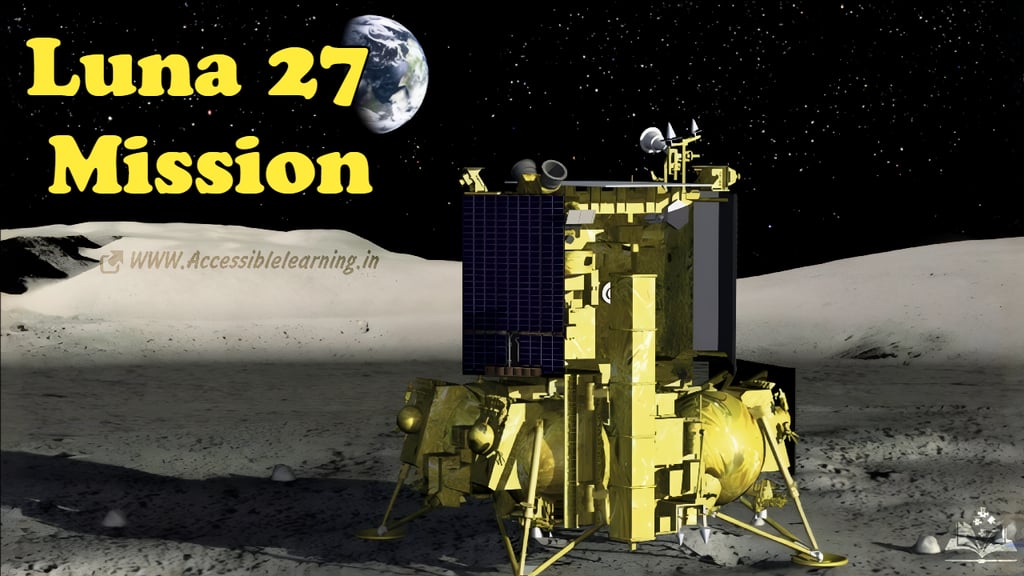

Luna 27 is a highly sophisticated robotic lunar lander that represents Russia’s revival of deep-space exploration under its Luna-Glob program. Designed to study the Moon’s south pole, this mission is crucial for understanding lunar resources, particularly water ice, and testing next-generation landing technologies for future crewed missions.
With geopolitical shifts and evolving space strategies, Luna 27 is a cornerstone of Russia’s lunar ambitions and a critical mission in the broader global effort to explore and potentially colonize the Moon. Let’s dive deep into its technical details, scientific goals, and broader implications.
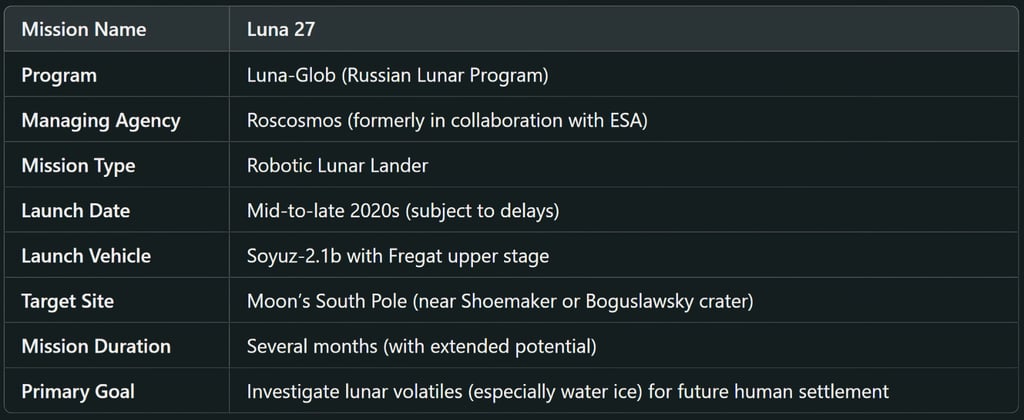

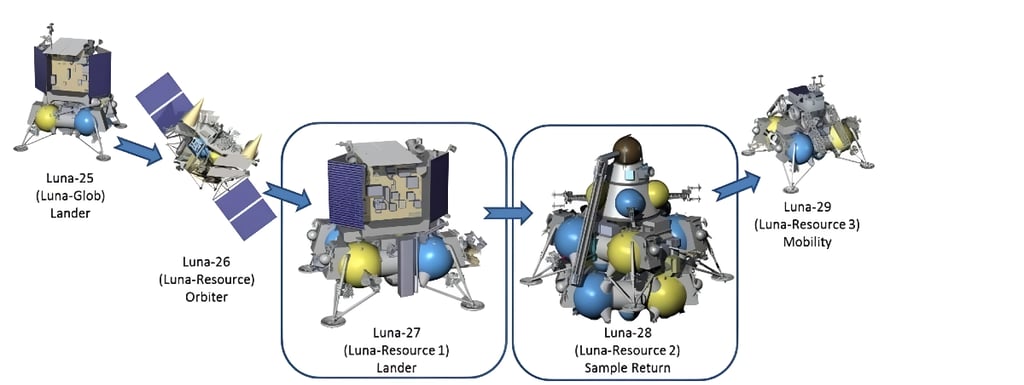

Scientific Goals of Luna 27
Detection and Analysis of Lunar Ice & Volatiles
Water ice deposits in permanently shadowed craters could serve as fuel, oxygen, and drinking water for future missions.
The mission aims to determine the depth, composition, and distribution of lunar ice.
Lunar Regolith Composition Study
Analyze soil samples using infrared, laser, and mass spectrometry to understand the Moon’s chemical makeup.
Identify valuable elements such as oxygen, hydrogen, carbon, and rare minerals.
Advanced Autonomous Landing Technology
Test hazard-avoidance navigation using AI-driven onboard systems.
Perform a soft landing in one of the most challenging terrains on the Moon.
Lunar Environment Assessment for Future Human Missions
Study radiation exposure levels for potential astronaut safety.
Examine moondust’s electrostatic properties, which can damage equipment and spacesuits.
Cutting-Edge Technology Aboard Luna 27
Luna 27 carries state-of-the-art scientific instruments and innovative landing technologies designed for precision and efficiency. Below are some of the key systems:
PILOT Navigation and Landing System (Developed by ESA)
Uses LIDAR (Light Detection and Ranging) and high-resolution cameras for hazard avoidance.
Autonomous decision-making system to adjust descent trajectory for a safe landing.
First major test of advanced landing tech for future lunar and planetary missions.
PROSPECT Drill & Analysis System
Drilling depth: Up to 1 meter into lunar soil.
Works in extreme temperatures (-150°C in permanently shadowed regions).
Designed to extract and analyze frozen samples of volatiles like water, carbon dioxide, and ammonia.
Equipped with two miniature ovens that heat samples to release and analyze trapped gases.
Laser-Induced Breakdown Spectroscopy (LIBS)
Uses powerful laser pulses to vaporize tiny amounts of lunar regolith.
Analyzes the emitted light to determine the elemental composition of the soil.
Helps detect essential compounds for potential lunar mining operations.
Radiation and Dust Sensors
Measures cosmic radiation levels, which could affect future human colonies.
Analyzes how moondust behaves in low-gravity environments—important for designing lunar habitats.
Radio and Seismic Instruments
Aims to map the Moon’s underground structure by detecting seismic activity.
Helps in understanding the Moon’s geological history and stability for potential base construction.
Landing Site: Why the Moon’s South Pole?
The Moon’s south pole is one of the most scientifically promising locations for exploration. Here’s why:
Water Ice Deposits
Several studies, including India’s Chandrayaan-1, NASA’s LCROSS, and China’s Chang’e missions, indicate large quantities of ice in shadowed craters.
This ice could be mined and converted into rocket fuel, water, and breathable oxygen.
Consistent Sunlight in Certain Regions
Some peaks near the south pole receive near-constant sunlight, making them ideal for solar power generation for future missions.
Scientific and Strategic Importance
Studying lunar volatiles can unlock secrets about the Moon’s history and solar system evolution.
The south pole is a key target for future lunar bases by Russia, the US (Artemis Program), and China.
How Luna 27 Fits Into the Global Lunar Race
Comparison With Other Upcoming Lunar Missions
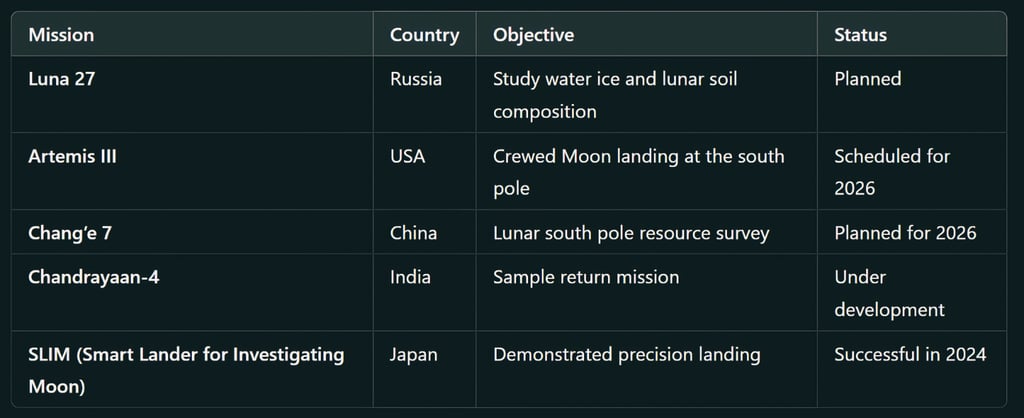

Challenges & Future Prospects for Russia’s Lunar Program
Challenges Facing Luna 27
Geopolitical and Funding Issues
ESA’s withdrawal has slowed development.
Russia’s economic conditions could impact long-term funding.
Technical Difficulties
Landing in the Moon’s south pole is riskier due to rough terrain.
Communication challenges—the region has limited direct line-of-sight to Earth.
Competition From Other Space Agencies
NASA, China, and India have rapidly advancing lunar programs.
Maintaining leadership in lunar exploration is increasingly challenging for Russia.
Future Missions After Luna 27
Luna 28 (Luna-Grunt): A sample return mission to bring back lunar soil to Earth.
Luna 29: A robotic rover-based mission to explore the Moon’s surface.
Potential Russian crewed Moon mission by the 2030s, in collaboration with China.
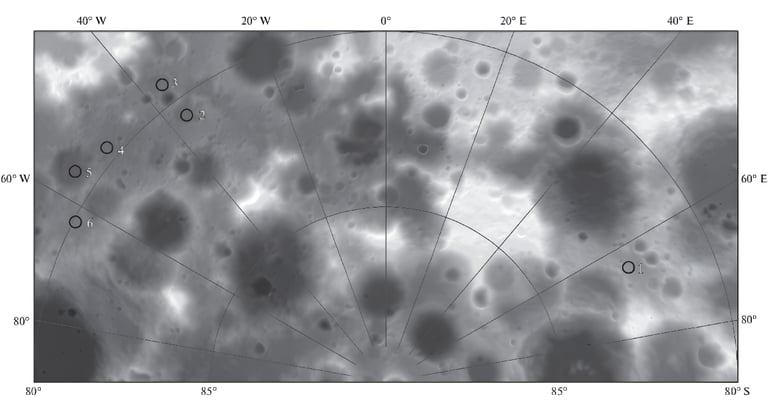

FAQs
What is the purpose of the Luna 27 mission?
Luna 27 aims to explore the Moon’s south pole, analyze water ice deposits, study lunar soil composition, and test advanced autonomous landing technology for future lunar missions.
When will Luna 27 launch?
The mission is expected to launch in the mid-to-late 2020s, although delays may occur due to geopolitical and technical challenges.
Why is Luna 27 targeting the Moon’s south pole?
The south pole is believed to contain large reserves of water ice, which could be crucial for future human settlements and space exploration. Some areas also receive near-continuous sunlight, making them ideal for solar energy collection.
What scientific instruments does Luna 27 carry?
PILOT Navigation System: AI-powered autonomous landing tech
PROSPECT Drill & Analysis System: To extract and study ice and regolith
LIBS Spectrometer: To determine chemical composition
Radiation & Dust Sensors: To assess lunar environmental hazards
Seismic Instruments: To analyze the Moon’s underground structure
How does Luna 27 compare to other upcoming lunar missions?
Luna 27 is Russia’s response to NASA’s Artemis program, China’s Chang’e missions, and India’s Chandrayaan program. While it focuses on scientific research and resource discovery, other missions also aim for crewed landings and permanent lunar bases.
What happened to Russia’s collaboration with the European Space Agency (ESA)?
ESA initially provided key technologies like the PILOT landing system and PROSPECT drill, but due to geopolitical tensions, it suspended cooperation in 2022. Russia is now considering alternative solutions, possibly in collaboration with China.
What are the biggest challenges for Luna 27?
Harsh lunar environment: Extreme cold and uneven terrain
Autonomous landing risks: AI-driven descent needs precise execution
Communication challenges: Limited Earth visibility at the south pole
Funding and political issues: Sanctions and budget constraints impact development
What future missions will follow Luna 27?
Luna 28 (Luna-Grunt): A sample return mission
Luna 29: A rover mission for in-depth surface exploration
Potential Russian-Chinese crewed missions in the 2030s
Luna 27 is more than just a robotic lander—it represents Russia’s ambition to reclaim its role in lunar exploration. If successful, this mission will:
✅ Confirm the presence of usable water ice for future lunar bases.
✅ Test cutting-edge autonomous landing technology for safe precision landings.
✅ Provide crucial insights into the Moon’s geology and atmosphere.
✅ Serve as a stepping stone for long-term human settlement on the Moon.
Despite setbacks, Russia remains committed to deep-space exploration. If Luna 27 succeeds, it could pave the way for a new era of international lunar collaboration and resource utilization. 🚀🌕
Subscribe To Our Newsletter
All © Copyright reserved by Accessible-Learning Hub
| Terms & Conditions
Knowledge is power. Learn with Us. 📚


